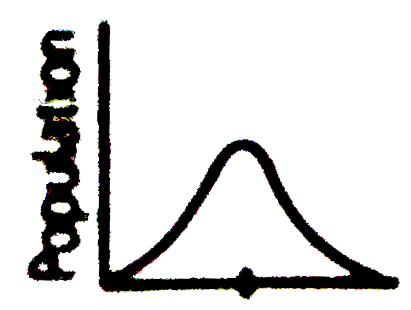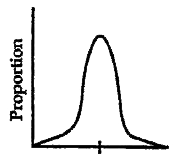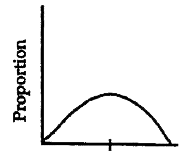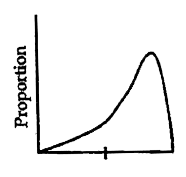If a trait A exists in 10 % of a population of an asexually reproducing species and trait B exists in 60 % of the same population ,which trait is likely to have arisen earlier ?
Trait B would have arisen earlier than trait A because as species are asexually reproducing ,there would be very minor differences generated due to small inaccuracies in DNA copying which results in variations in trait A. But as trait B occurs in more number in the population as compared to trait A Trait B would have arisen earlier than trait A.
Topper's Solved these Questions
- HEREDITY AND EVOLUTION BOOK - OSWAL PUBLICATIONCHAPTER - HEREDITY AND EVOLUTION EXERCISE - LONG ANSWER TYPE QUESTIONS
14 Videos
- HEREDITY AND EVOLUTION BOOK - OSWAL PUBLICATIONCHAPTER - HEREDITY AND EVOLUTION EXERCISE - DIFFERENTIATE BETWEEN
2 Videos
- HEREDITY AND EVOLUTION BOOK - OSWAL PUBLICATIONCHAPTER - HEREDITY AND EVOLUTION EXERCISE - REASONING BASED QUESTIONS
2 Videos
- HEREDITYBOOK - OSWAL PUBLICATIONCHAPTER - HEREDITYEXERCISE - BOARD CORNER (Long Answer Type Questions)
4 Videos
- HOW DO ORGANISMS REPRODUCE ?BOOK - OSWAL PUBLICATIONCHAPTER - HOW DO ORGANISMS REPRODUCE ?EXERCISE - CREATING BASED QUESTIONS
6 Videos
Similar Questions
If a trait A exists in 10% of a population of an asexually reproducing species and a trait B exists in 60% of the same population, which trait is likely to have arisen earlier?
View SolutionIf a trait A exists in 10% of a population of an asexually reproducing species and a trait B exists in 60% of the same population, which trait is likely to have arisen earlier?
View Solution
Knowledge Check
Which of the following is not a direct conclusion that can be drawn from Mendel's Experiment ?
a) Only one parental trait is expressed
b) Two copies of each trait is inherited in sexually reproducing organism
c) For recessive trait to be expressed, both copies should be identical
d) Natural selection can alter frequency of an inherited trait.AOnly one parental trait is expressedBTwo copies of each trait is inherited in sexually reproducing organismCFor recessive trait to be expressed, both copies should be identicalDNatural selection can alter frequency of an inherited trait.10% of Brazil's population migrated to South Affrica 10% of the remaining migrated to America and 10% of rest migrated to Australia. If the female population which was left in Brazil remained only 3,64,500 , Find the population of Brazil city before the migration the female population was half the male population and this ratio did not change after the migration ?
A1800000B1500000C1600000D1400000The given graph shows the range of variation among population members for a trait determined by multiple genes. If this population is subjected to disruptive selection for several generations, which of the following distributions is most likely to result?
 A
A B
B C
C D
D
If a trait A exists in 10% of a population of an asexually reproducing species and a trait B exists in 60% of the same population, which trait is likely to have arisen earlier.
View SolutionIf a trait A exists in 10% of a population of an asexually reproducing species and a trait B exists in 60% of the same population, which trait is likely to have arisen earlier?
View SolutionIf a trait A exists in 10% of a population of an asexually reproducing species and a trait B exists in 60% of the same population, which trait is likely to have arisen earlier?
View SolutionIn 2019 if there is 10% increase in population of city A and 15% decrease in the population in B as compared to that in 2018 ,then the population of city A is what percentage more /less than in B , in that year ? (correct to one decimal places)

View SolutionThe following graph shows the range of variation among population members for a trait determined by multiple genes.

If this population is subject to stabilizing selection for several generations, which of the distribution is most likely to result ?
View Solution
